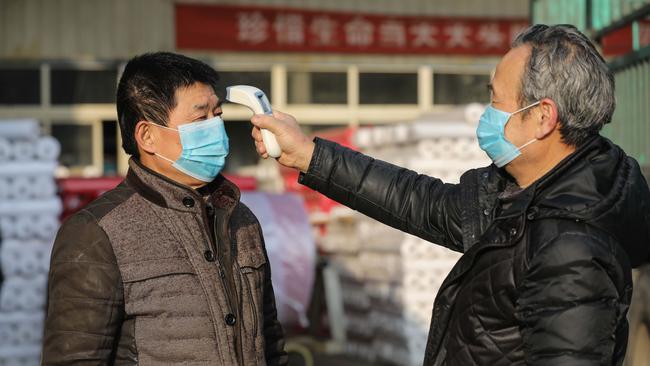
With the help of leading Australian small business researcher Ross Cameron, we can gain our first picture of what is actually happening on the ground in Chinese factories.
If the incredible actions China has undertaken to contain COVID-19 are successful (current encouraging statistics could be unreliable) then China’s fear will be visitors from overseas reinfecting the nation.
With segments of the Australian medical profession not understanding what is happening in the world, we could have the bizarre situation of China banning Australians and our borders open for those Chinese courageous enough to come here.
We all need to understand that the actions of the Melbourne doctor — albeit in ignorance – could be a contributor to the city adopting extreme measures. Sydney may need to follow. Of course we might be lucky.
Meanwhile Ross Cameron’s “on the ground” reports, made late last month from various Chinese small business suppliers, detail some of the efforts China is undertaking to get back on its feet. But where stock is available, there is great uncertainty about demand patterns.
Cameron’s first report comes from an importer/wholesaler who supplies many small retailers across Australia. Employing around 100 people, he sources most of his product from China and says:
“Certain provinces that are a distance away from Wuhan seem to have passed through the problem with vigilant practises by the local government.”
That is – ‘stay home until we tell you that you can go back to work’.
He continues: “So in certain provinces you can get government approval to resume work provided you put into place health safety measures. For example, my older brother has some big contracts with US and European customers and works out of China.
“About a week ago, he went into China and will stay at his factory for about four to six weeks. His factory is back at full capacity.
“He was telling me that there has to be a full-time temperature checking station at the factory gate. This is also the case at most if not all apartment buildings where they check your temperature as you enter and leave the premises. He gets checked daily.
“So, most of my suppliers are back at work now, so as far as we are being told. We will only have about a four or five week delay in getting stock. It will affect my Mother’s Day trade, but hopefully not by much.”
Of course, the unspoken story is how much will this ‘spook’ the consumer/trade customer? Will they panic buy or will they ride the storm? Will the competition cause panic buying by saying “get in now before we run out of stock”?
The second Cameron report comes from an importer/wholesaler of sportswear who moves about 800,000 items a year. Most of his stock comes from China and is distributed throughout the world, particularly Europe and Asia:
He says the impact depends on the region in question.
“Some of our suppliers are really struggling,” he says.
One of those suppliers sent an email that said: “Our factory got the approval to resume working on February 16. However, the workers are coming back much slower than usual. Up to today we have 15 per cent production capacity running, and we expect to have 35 per cent production capacity by next week.
“But they are all saying they’ll get orders out on time or one week behind schedule. They are working a lot of overtime and have set employees up from home to cover our queries that are office based.
“It’s hard to predict what it will be like getting on a ship in March and April but we expect there will be further delays especially going into the foreign ports that struggle through peak periods, like into Europe.
“From a demand side it will have a huge impact on our Asia sales. Pools are closed and major competitions are cancelled. Some customers have already stopped ordering saying they can’t predict what will happen”.
A third Cameron report three comes from a major a group importing and retailing variety goods which sources around half of their product from China to sell through their 40 or so stores
“The word from our end is that some ports reopened last week and the flow of stock is about to begin – it’s going to be late but it’s flowing,” the importer says.
“The degree of lateness is unclear. But a major concern for us is winter inventory. This will impact sales, margins, etc. The impact on margin will be because you will have to source locally to have product so margins will take a hit.
“If the inventory is late then this has issues around clearance of the stock because of a reduced time frame. All retailers will be in the same boat. For us, 50 per cent of our product is exposed. Many fashion retailers are at 80 to 90 per cent. I suspect more closures of these retailers post the virus.”




The extraordinary efforts China has undertaken to control the COVID-19 version of coronavirus gives the world a chance of restoring a big chunks of the supply chain in a few months.